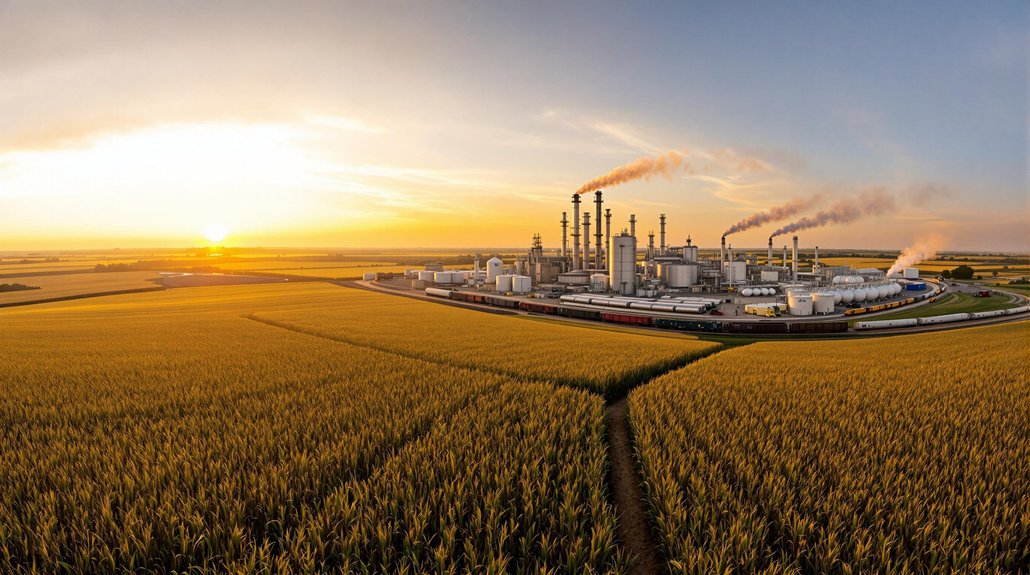America’s corn transformation transformed the U.S. fuel supply through ethanol production. Spurred by the 2005 Renewable Fuel Standard, farmers now produce over 15 billion gallons of corn ethanol yearly, creating a $40 billion industry. Most American gasoline contains 10% ethanol (E10), reducing greenhouse gas emissions by 23% compared to regular gasoline. The industry supports rural economies while facing environmental challenges. Recent policy changes and technological innovations continue to shape ethanol’s expanding role in America’s energy landscape.
Since the early 2000s, corn has transformed America’s energy landscape in ways few could have imagined. What was once just a food crop is now a major energy source, with U.S. farmers producing over 15 billion gallons of corn ethanol annually by 2024. This shift has created a $40 billion industry that’s changing rural economies across the country.
The growth of ethanol production stems largely from the Renewable Fuel Standard (RFS), established in 2005. This policy requires biofuels to be blended into the nation’s fuel supply each year. The Energy Policy Act mandated renewable fuel production through the RFS, which was later modified in 2007 by the Energy Independence and Security Act. As a result, most gasoline in America now contains 10% ethanol, commonly labeled as E10 at gas stations.
Ethanol offers notable environmental benefits. It produces 23% fewer greenhouse gas emissions than gasoline, according to recent studies. Advanced refining methods have improved this further, with some processes cutting emissions by up to 43% compared to traditional gasoline. The fermentation process used to produce ethanol is one of several biochemical processes that can convert biomass into usable energy.
The corn boom has brought jobs and income to farming communities. Ethanol plants employ thousands of workers, and U.S. ethanol exports now contribute over $3 billion annually to the economy. Farmers have expanded corn acreage to over 90 million acres nationwide, with yields reaching record highs of 177 bushels per acre.
However, this corn transformation isn’t without challenges. Increased corn farming has led to soil degradation and erosion in some areas. Greater fertilizer use has caused nitrogen runoff into waterways. Ethanol refineries also use substantial amounts of water, putting pressure on local supplies. The industry has become increasingly vital as recent years have seen a plummet in farm income creating economic hardship for agricultural communities.
Technology is helping address these concerns. Modern refineries increasingly use natural gas and renewable energy. Precision farming techniques help farmers grow more corn with less environmental impact. Some plants now capture carbon emissions during production.
Policy continues to shape ethanol’s future. Recent changes allow year-round sales of E15 fuel, containing 15% ethanol. State programs like California’s Low-Carbon Fuel Standard reward cleaner ethanol production methods. As technology advances, ethanol’s role in America’s energy mix continues to evolve.








